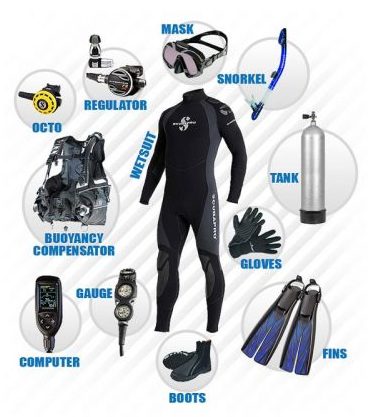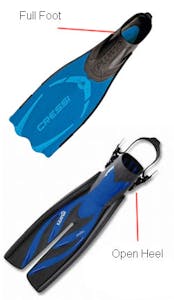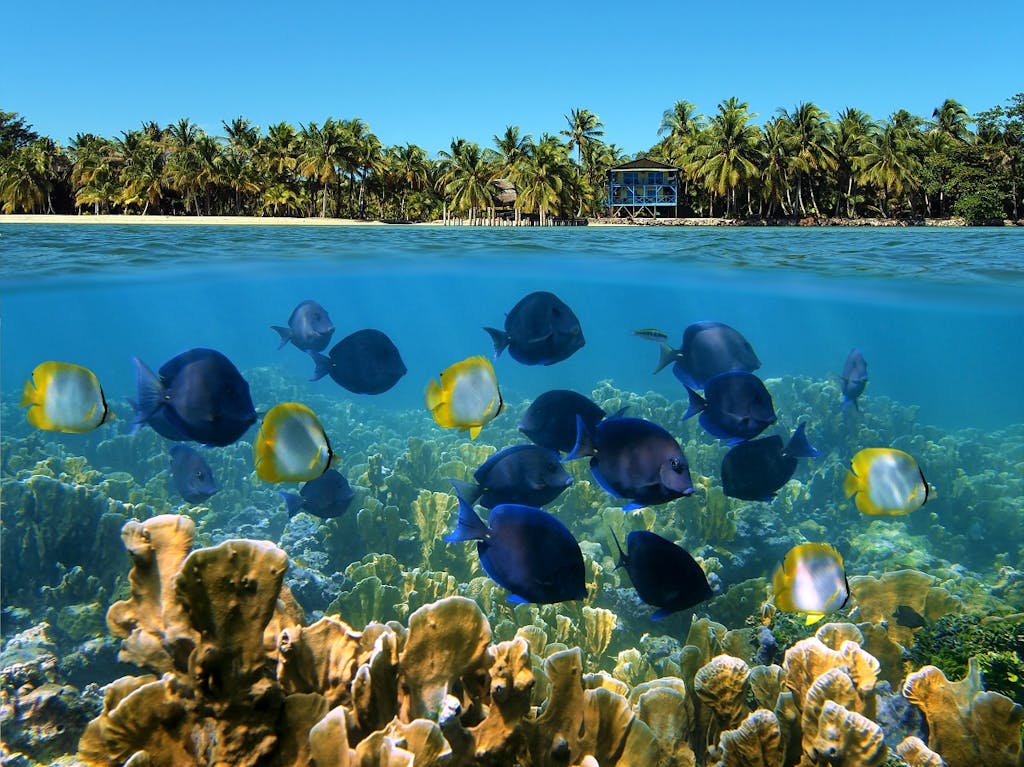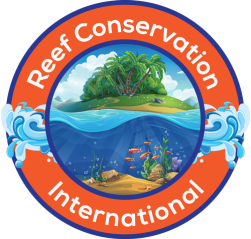Dive Gear Requirements and Recommendations
You must bring your own wetsuit, dive mask, fins, and booties. It is very important that you bring these items or you will not be able to dive! There are no reliable places in Placencia, Belize to buy or rent these items; therefore, it’s important you have them prior to your trip departure.
We do not provide dive computers since almost all of our volunteering dives and conservation efforts are at depths less than 18m/60ft. However, a dive computer is mandatory for any diver that wants to dive deeper than 18m/60ft or for those taking the PADI Advanced Open Water certification course with us.
We provide the rest of your dive gear – BCD’s, tanks, regulators, and weights for a $30 USD per week dive gear rental fee. You are welcome to bring your own dive gear if you prefer. Anyone wishing to participate in our optional night dives MUST bring their own dive light/torch. Please note that in order to participate in night dives one must be a certified Advanced Open Water diver.
Below are ReefCI’s recommendations when it comes to wetsuits, dive masks, fins, and booties.
Wetsuit Recommendation
The surface water temperature is consistently around 80F/26C, but much cooler at depth so a 3mm wetsuit (long or short) is just about right for most people. However, it just depends on how much you feel the cold; some dive with just a rash guard while others always dive with a wetsuit. I highly recommend bringing a 3mm wetsuit regardless of the time of year; being cold while diving is no fun at all. It is reassuring to know you have one in case you need it. Moreover, a good wetsuit is a good investment as there is nothing better than getting one that is custom fit to your exact height and weight.
Dive Mask vs Snorkel Mask Recommendation
There is a difference between scuba masks and snorkel masks. Masks made for scuba diving are made from much higher quality materials and subjected to more scrutinizing tests because they must keep out water at much greater depths. The deeper you go, the more pressure there is pushing water into the mask. With a snorkeling mask, pressure is greatly reduced, and if there is a problem you are never far from the surface. Because scuba masks are made with better quality materials, they are more expensive. Scuba diving masks typically cost between $30 to $120. Snorkeling masks can run anywhere from $10 to $40. Comfort when diving is very important and a good mask is probably first on the list to achieving comfort in the water. You won’t regret getting a good diving mask 🙂 Here is a link to a good dive mask on Amazon.
Dive Fins Recommendations
Make sure you buy fins that are for diving and not snorkeling. Dive fins are longer than snorkel fins and if you buy snorkeling fins you won’t be able to keep up with your dive group. Below are the 2 main types of dive fins with my recommendations.

1. Full Foot/Barefoot Style (No booties required with this style)
Key Characteristics of Full-Foot Fins:
- Easy to wear and remove
- Can be worn barefoot without booties
- Proper fit is more critical
- Doesn’t offer thermal protection
- Amazon link to a good pair of full foot/barefoot fins
2. Open-Heeled Foot Style with Straps (Booties required with this style)
Key Characteristics of Open-Heeled Fins:
- Adjustable straps for a more custom fit
- Worn over booties or diving socks
- Ideal for scuba diving
- Slightly bulkier and more expensive
- Amazon link to a good pair of open-heeled fins
Booties Recommendation
Booties are needed to protect against blisters but ONLY if your dive fins are the open heel type with straps. If you have full foot/barefoot style fins then you do not need booties. Bootie thickness does not really matter – certainly nothing too thick since you will be diving in warm water – anything 3mm or less is great for booties. Here is an Amazon link to a cheap pair of booties.
Frequently Asked Diving Questions
Required Dive Gear?
You must bring your ownwetsuit, dive mask, fins, and booties.It is very important that you bring these items or you will not be able to dive! There are no reliable places in Placencia, Belize to buy or rent these items; therefore, it’s important you have them prior to your trip departure. We do not provide dive computers since almost all of our volunteering dives and conservation efforts are at depths less than 18m/60ft. However, a dive computer is mandatory for any diver that wants to dive deeper than 18m/60ft or for those taking the PADI Advanced Open Water certification course with us.
We provide the rest of your dive gear – BCD’s, tanks, regulators, and weights for a $30 USD per week dive gear rental fee. You are welcome to bring your own dive gear if you prefer. Anyone wishing to participate in our optional night dives MUST bring their own dive light/torch. Please note that in order to participate in night dives one must be a certified Advanced Open Water diver.
Check-Out Dive/Dive Refresher?
No worries if it has been a while since your last dive. Feel free to share any concerns you have with the team upon arrival and they will give you a refresher on basic skills on land before your dive if requested. Most of our volunteers are excited about getting in the water but are a little nervous having not dived for a while. Our dive team is here to help and our first dive is a shore dive from the island which will help regain your confidence.

Time for Conservation Dives if I get a PADI Certification?
All PADI specialty courses, as well as the PADI advanced and rescue that we offer on the island do not take away from the conservation dives we do. We manage to work them during and between the conservation dives.
However, please note that if you are taking the PADI open water or PADI divemaster courses that these are more intensive and do cut into some of the conservation diving.
Number of Dives Per Week?
We typically do 12 to 13 dives each week. Two on Monday (first dive is a check-out dive), three dives on Tuesday, Wednesday, and Thursday. In addition, we do at least one night dive per week. On Friday’s, we do a pre-breakfast dive, have breakfast then debrief and return to the mainland anywhere from 11am to 1pm We only take small groups and our instructors are great at concentrating on helping individual divers and techniques.
Minimum Age to Participate?
Kids Under 13 Prohibited. One must be at least 13 years old to come to our island, anyone under 13 is prohibited. Our volunteer trips are not kid friendly and are geared towards divers or those who want to be certified on the island. Our first and foremost mission is our marine conservation efforts and there is not much to do for young kids/ non-divers.
